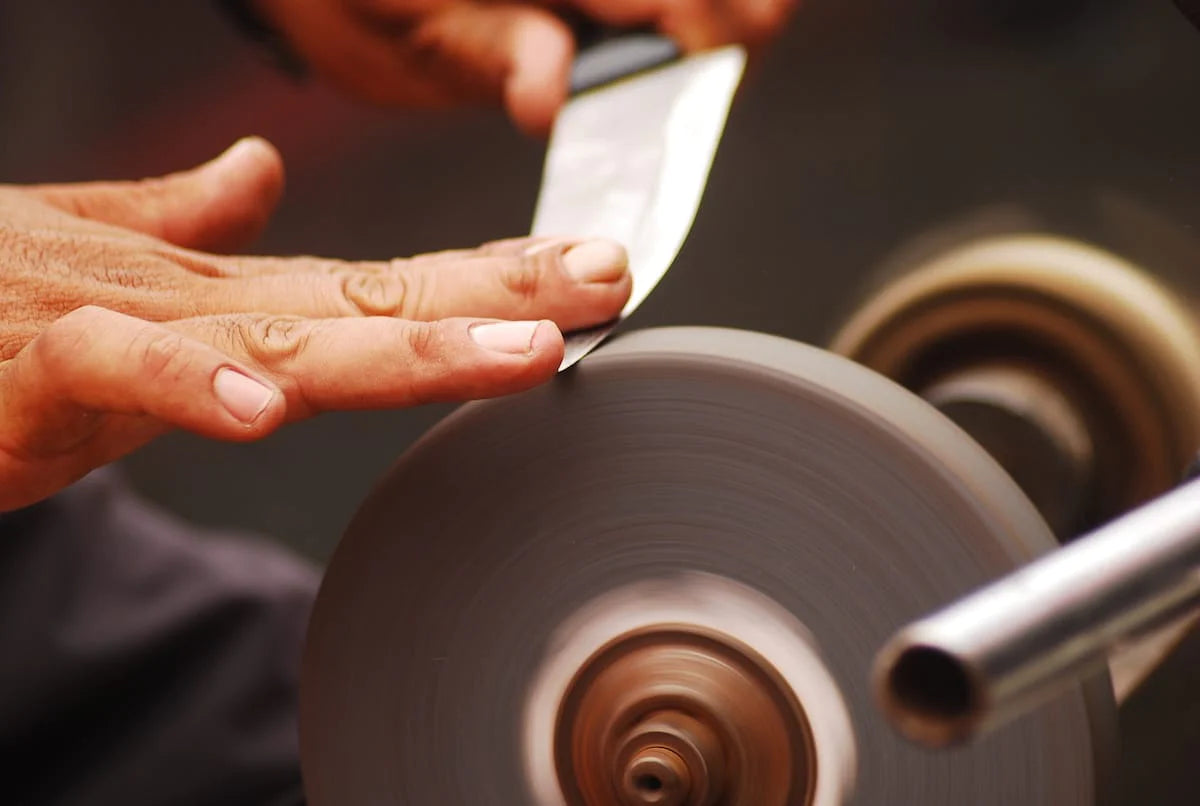on all orders over $150
on all orders over $150

Sharpening tools is a crucial skill for anyone who uses tools regularly. Whether you’re a professional carpenter or just a DIY enthusiast, having sharp tools can make all the difference in the quality of your work. However, sharpening tools can be tricky, and there are some common mistakes that many people make. In this blog post, we’ll be discussing five common sharpening mistakes to avoid.
One of the most significant mistakes that people make when sharpening tools is not using the correct angle. Different tools require different angles for the best sharpening results. Using the wrong angle can make the tool duller, not sharper.
For example, chisels require a different angle than knives. Chisels typically require a 25-degree angle, while knives usually need a 20-degree angle. Before sharpening any tool, it’s essential to research the correct angle needed for that tool.
Another mistake that many people make is rushing the sharpening process. Sharpening a tool takes time and patience. If you rush through the process, the tool may not be sharpened correctly, and you may end up doing more harm than good.
To avoid rushing the process, take your time and work slowly, using light pressure. Avoid applying too much pressure because this can cause the blade to become misshapen or damaged.
It’s also essential to take breaks, especially when sharpening larger tools, to avoid becoming fatigued. Sharpening tools is a delicate process that requires focus and attention to detail.
After sharpening a tool, it’s essential to check for burrs. Burrs are tiny flakes of metal that can be left behind after sharpening. If not removed, burrs can damage the blade, making it duller and less effective.
To check for burrs, run your fingers along the edge of the blade, feeling for any rough spots or raised points. If you feel any burrs, use a honing stone to remove them.
Removing burrs is an essential step that many people overlook when sharpening tools. Taking the time to do so can make a big difference in the sharpness and effectiveness of the tool.
Another mistake that people make is overusing their tools. Sharpening a tool can only do so much to improve its effectiveness. Over time, the blade will become too worn down to be effectively sharpened.
If you find that you’re sharpening a tool regularly, it may be time to replace it. Continuing to use a tool that is too worn can be dangerous and can lead to accidents in the workshop.
It’s also essential to avoid using a tool that is too dull. Using a dull tool requires more force, which can lead to mistakes and accidents.
Finally, one of the most significant mistakes that people make when sharpening tools is not having the right equipment. While it’s possible to sharpen some tools using a sharpening stone, other tools require specialized equipment.
For example, chainsaw blades require specialized sharpening tools that are designed specifically for that purpose. Using the wrong equipment can damage the tool and make it less effective.
Before sharpening any tool, it’s essential to research the correct equipment needed for that tool. Investing in high-quality equipment can make all the difference in the effectiveness of the sharpening process.
Sharpening tools is a crucial skill that every DIY enthusiast and professional carpenter should master. However, it’s essential to avoid common sharpening mistakes to get the best results possible. By following the tips included in this blog post, you can avoid the most common mistakes and keep your tools sharp and effective. Remember to use the correct angle, take your time, check for burrs, replace worn tools, and use the right equipment. With these tips, you’ll be able to keep your tools in top condition and get the most out of your DIY projects.